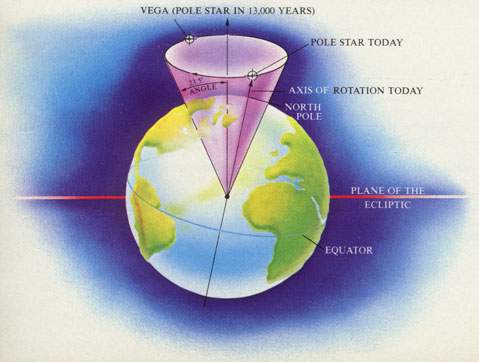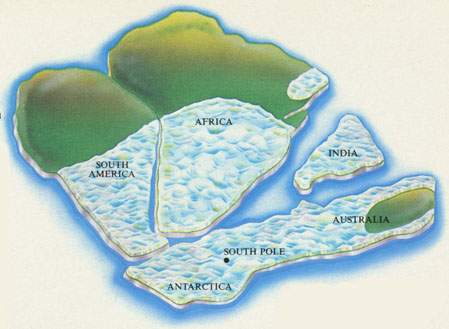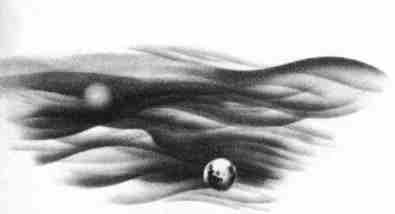
| Ice sheets may wax and wane due to the changing distribution of solar energy over the globe. A factor contributing to this change is the shift in attitude of the Earth's axis with respect to the sun. |
 |
 |
| When continents have drifted over or near the poles during Earth's annals, they become cold enough for glacial growth. Evidence indicates that the enormous landmass above, positioned at the South Pole over 100 million years ago, was capped in ice. |
| Debris recently spewed from El Chichon volcano in Mexico has caused sulfuric acid droplets to form high in the sky. These droplets--not ash--have reduced our sunlight by 5 percent. |
| As the Milky Way makes a full spin every 250 million years, it may sweep our solar system through a huge dust cloud that would shield us from some warm solar rays. Could this have been the cause of the three major ice epochs, which have a similar periodicity? |
 |
| For Further Reading: |
| Dance of the Tiger by Bj6rn Kurt6n. New York: Pantheon, 1980. |
| Future Weather and the Greenhouse Effect by John Gribbin. New York: Delacorte, 1982. |
| Ice: How the Next Ice Age Will Come and How We Can Prevent It by Fred Hoyle. London: Hutchinson, 1981. |
| Ice Ages: Solving the Mystery by John and Kath- erine Imbrie. New Jersey: Enslow, 1979. |
| The Roots of Civilization by Alexander Mar- shack. New York: McGraw-Hill, 1972. |
| Secrets of the Ice Age: A Reappraisal of Prehistor- ic Man by Evan Hadingham. New York: Walk- er, 1982. |